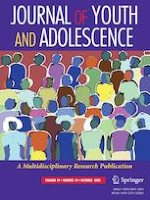22-08-2020 | Empirical Research
Exposure to Multiple Forms of Bias Victimization on Youth and Young Adults: Relationships with Trauma Symptomatology and Social Support
Gepubliceerd in: Journal of Youth and Adolescence | Uitgave 10/2020
Log in om toegang te krijgenAbstract
Research has documented that a significant portion of youth are exposed to bias victimization. However, less is known about whether experiencing certain types of bias victimization (e.g., sexual orientation bias) is more or less likely to be related to a more extensive bias victimization history (i.e., experiencing multiple types of bias victimization) and whether exposure to multiple types of bias victimization explains any relationships between specific types of bias victimization and negative outcomes. To address these gaps, the current study explores relationships between exposure to multiple types of bias-motivated victimization, trauma symptomatology and perceived social support. Participants were 854 youth and young adults (60.9% female) from three higher risk communities who completed a survey on personal experiences with bias-related victimization. The average age of participants was 16.6 years; 28.5% of the sample described themselves as Black or African American; 13.4% as Hispanic or Latino (any race); 45.3% as White, and 12.8% as another race. Sixty-nine percent of the sample described their sexual orientation as heterosexual; 8.9% as gay, lesbian, or homosexual; 12.5% as bisexual; and 9.5% as another sexual orientation. Sixty-three percent of participants reported at least one type of bias victimization in their lifetime, and more than one in three youth (38.7%) experienced two or more types of bias victimization in their lifetimes (18.1% two types, 12.1% three types, and 8.5% four or more types). Experiencing multiple types of bias victimization was related to higher trauma symptomatology and less perceived social support. Experiencing multiple types of bias victimization attenuated or eliminated the association between individual types of bias victimization and well-being. The findings contribute to a growing body of research demonstrating the damaging mental health effects of occupying multiple marginalized statuses, and points to the cumulation of bias victimization experiences as an important factor contributing to significant differences in well-being and support among youth and young adults.
